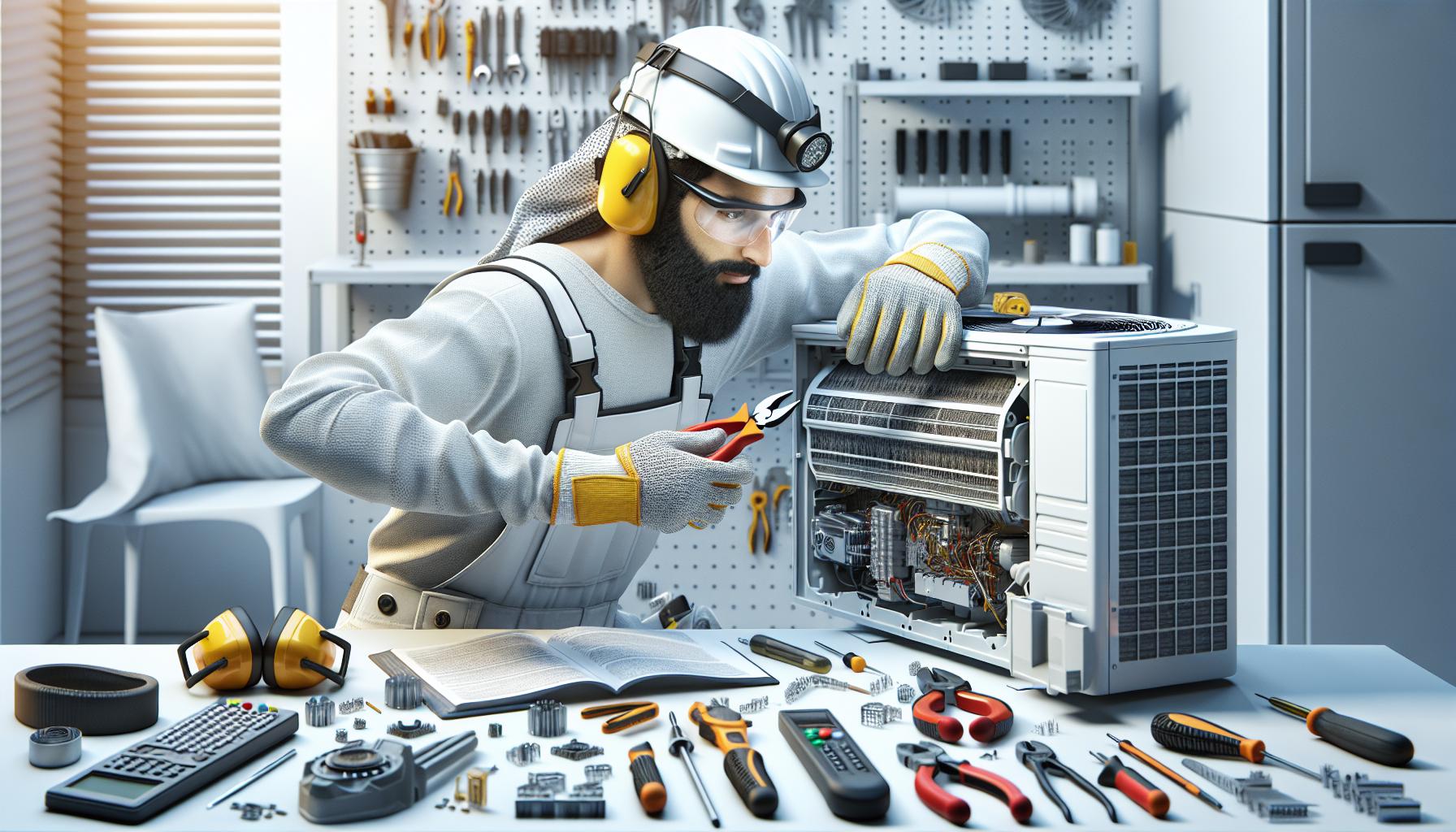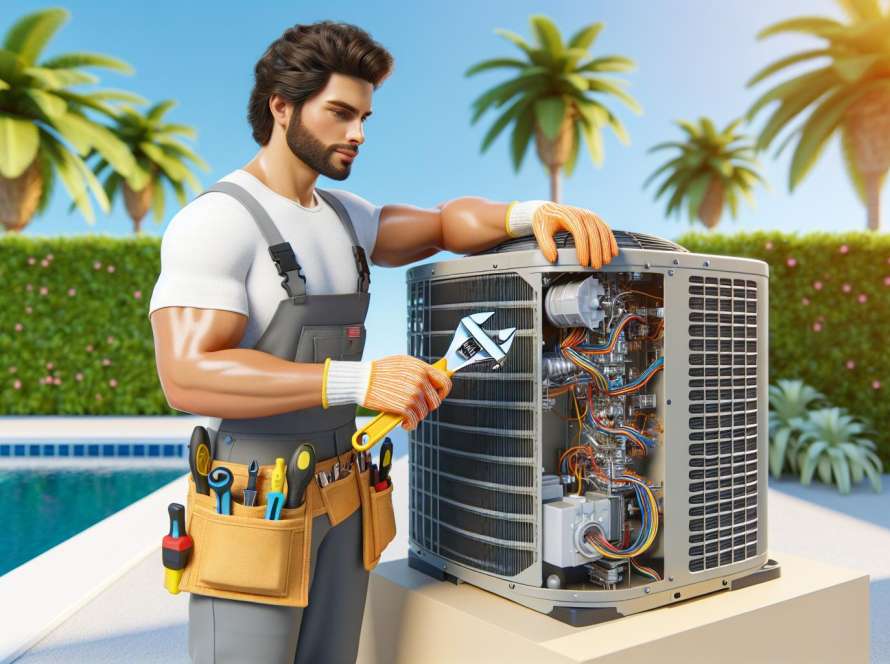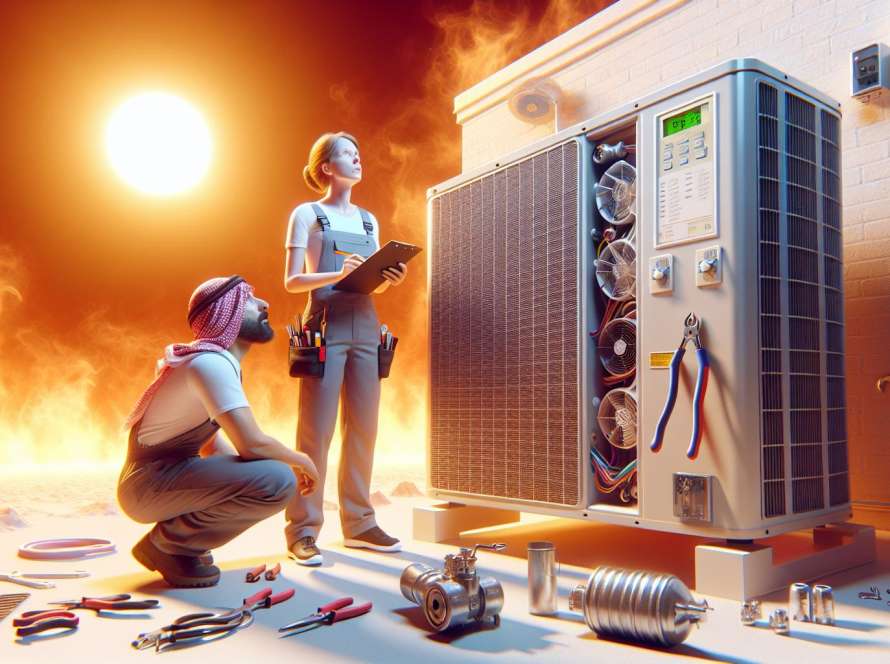So, you’re a Florida resident dealing with a faulty AC unit in the scorching heat? We’ve got your back with some DIY AC repair tips to keep you cool and comfortable. Florida’s humidity and high temperatures can put a strain on your air conditioning system, but with our expert advice, you’ll be able to tackle common issues like a pro.
Understanding Your AC System
When it comes to Understanding Your AC System, it’s essential to grasp the basics to troubleshoot effectively. Let’s delve into different aspects based on your familiarity level:
For Beginners: Embracing the Basics
- Start by locating your AC unit, which is typically placed outdoors.
- Understand the roles of the condenser coil and evaporator coil for cooling.
- Check and replace air filters regularly to maintain efficiency.
- Clear any obstructions around the outdoor unit to ensure proper airflow.
For Intermediate Users: Elevating Your Understanding
- Dive deeper into understanding refrigerant levels and their impact on cooling.
- Familiarize yourself with the thermostat settings and how to optimize them.
- Learn about ductwork inspection and sealing for improved air circulation.
- Consider investing in a smart thermostat for enhanced control and energy savings.
- Conduct comprehensive system diagnostics to identify complex issues.
- Explore duct sizing and design principles for optimal airflow distribution.
- Upgrade to high-efficiency AC units for long-term savings.
- Incorporate HVAC zoning to customize cooling for different areas of your home.
By understanding these aspects of your AC system, you’re equipped to tackle issues effectively and ensure efficient cooling throughout Florida’s challenging climate.
Safety Precautions Before Proceeding

Before diving into DIY AC repairs, it’s crucial to prioritize safety to prevent accidents and ensure a smooth process. Here are some essential safety precautions to keep in mind:
For Beginners: Starting on the Right Foot
- Safety Gear: Always wear protective gear like gloves and goggles to shield yourself from potential harm.
- Power Off: Before starting any work, ensure to switch off the power to the AC unit to avoid electric shock.
- Cleaning: Keep the work area clean and clutter-free to prevent tripping hazards.
For Intermediate Users: Stepping Up the Game
- HVAC Knowledge: Understand the basics of HVAC systems to troubleshoot effectively and safely.
- Proper Tools: Use the right tools for the job to avoid damaging components or causing injury.
- Circuit Awareness: Familiarize yourself with the AC unit’s circuitry and take necessary precautions when handling electrical parts.
- Refrigerant Handling: Only certified professionals should handle refrigerants to prevent environmental damage and health risks.
- Structural Integrity: Inspect the surrounding areas for any structural weaknesses before starting repairs to ensure stability.
- Emergency Plan: Have an emergency plan in place in case of accidents or unexpected issues during repair work.
Remember, safety should always come first when working on AC repairs. By following these precautions, we can ensure a secure and successful DIY repair process.
Cleaning and Changing Filters
When it comes to DIY AC repair for Florida residents, a fundamental task that we must not overlook is Cleaning and Changing Filters. This process is crucial for maintaining optimal performance and efficiency in your AC system. Here’s a breakdown of how to tackle this task at different experience levels:
For Beginners: Mastering the Basics:
- Locate the air filter in your AC system.
- Turn off the unit before proceeding.
- Remove the filter and inspect it for dirt and debris.
- If the filter is dirty, it’s time to replace it.
- Install a new filter following the manufacturer’s instructions.
- Ensure the filter is properly fitted before turning the unit back on.
For Intermediate Users: Enhancing Your Maintenance Routine
- Consider using high-efficiency filters for improved air quality.
- Establish a regular schedule for checking and replacing filters.
- Clean reusable filters with water and mild soap every few months.
- Check for leaks or gaps around the filter housing.
- Monitor the condition of the filter to determine replacement frequency.
- Conduct a static pressure test to evaluate filter performance.
- Explore electrostatic or HEPA filters for enhanced filtration.
- Utilize professional maintenance tools for precise measurements.
- Implement filter monitoring systems for proactive maintenance.
- Analyze airflow patterns to optimize filter placement and efficiency.
Remember, clean and efficient filters are key to a well-functioning AC system in the Florida climate. By mastering filter maintenance, you can ensure better air quality and prolonged equipment lifespan.
Checking and Unclogging Air Ducts
For Beginners: Getting Started
- Locate the air ducts in your home.
- Inspect for any visible dust or debris inside.
- Use a flashlight to get a better view of the ducts.
For Intermediate Users: Taking it Up a Notch
- Consider using a vacuum with a long hose attachment to clean out the ducts.
- Check for any signs of mold or mildew growth.
- Schedule professional duct cleaning every few years for a thorough maintenance routine.
- Invest in duct sealing to prevent air leaks and improve efficiency.
- Upgrade to high-efficiency air filters to enhance air quality.
- Monitor ductwork regularly for any issues and address promptly.
| Fact | Data |
|---|---|
| Average cost of duct cleaning | $350-$500 |
| Frequency of professional cleaning | Every 3-5 years |
Monitoring Refrigerant Levels

When it comes to DIY AC repair, monitoring refrigerant levels is crucial for Florida residents to ensure optimal performance and prevent issues. Let’s dive into specific recommendations based on different experience levels:
For Beginners: Understanding the Basics
- Start by locating the AC’s refrigerant lines.
- Check for any visible leaks or signs of damage.
- Learn how to read the pressure gauges to track refrigerant levels.
For Intermediate Users: Enhancing Your Evaluation
- Utilize a refrigerant leak detector to identify any hidden leaks.
- Invest in a refrigerant pressure test kit for more accurate readings.
- Familiarize yourself with the recommended refrigerant levels for your AC unit.
- Consider DIY refrigerant recharging if levels are low but within limits.
- Conduct a comprehensive inspection of the entire system for optimal performance.
- Collaborate with a professional HVAC technician for refrigerant related services.
Monitoring refrigerant levels is a fundamental aspect of AC maintenance that can contribute to energy efficiency and prolong the lifespan of your cooling system. Stay proactive to ensure your AC unit operates smoothly in the Florida heat.
Conclusion
Monitoring refrigerant levels is crucial for maintaining energy efficiency and extending the lifespan of your AC system in Florida. By following the DIY repair tips outlined in this article, we can ensure that our air conditioning units operate smoothly and effectively. Whether you are a beginner or an intermediate user, understanding how to check for leaks, locate refrigerant lines, and interpret pressure gauges is essential. Remember, collaborating with HVAC professionals and utilizing advanced tools like leak detectors and pressure test kits can help optimize your AC system’s performance. Stay proactive in monitoring refrigerant levels to keep your home cool and comfortable in the Florida heat.

